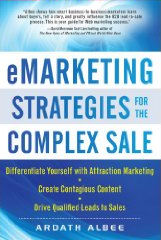Dialogue in Fiction is not Real
Try this some time. Go to a mall or a busy restaurant and eavesdrop on the conversations around you. Transcribe it and then tell me how exciting the real conversation reads to you. You'll probably get something along the lines of:
"So, you're going to Jane's party?"
"I don't know."
"Oh, come on, you should go. It'll be fun."
"Uh, huh."
"See that dress?"
"Where?"
"In that store over there."
"Yeah, so?"
"Isn't it the coolest?"
"So, you going to Jane's party?"
Pretty dull, right? Hard to follow as well. Conversations in real life tend to be filled with little pauses and sentences that don't say much and meanderings that the people in them can follow, but no one else can. If a book is written to reflect "real" conversation, then I guarantee, at least if I'm reading it, the book will hit the wall.
So what do you do?
As wrtiers we have a lot of tools to use. We have action, plus thoughts, plus narrative. And, you knew this was coming, we have Goal, Motivation and Conflict. These are all parts of the craft that go into writing dialogue. Otherwise what you have are talking heads dialogue with no context.
So to reframe the excerpt of "real" conversation above into fiction dialogue, I'm going to give it some texture.
Melissa and Debbie are hanging out at the malland Melissa is trying to get Debbie to go to Jane's party.
***
Melissa siddled around the family of four walking abreast through the mall and caught up to Debbie. "Are you going to Jane's party on Saturday?"
Debbie glanced at her, then away. "No."
Everyone who was anyone would be at Jane's party. "Why not? I was standing right there when she invited you."
Her friend stopped and feigned interest at the display of hockey sticks in the Sportsmart window display. "That's why she invited me."
"What are you talking about? She invited George and Carlos too."
Debbie ran her hand through her hair, yanking it off her forehead. "Jane doesn't like me."
"Jane likes everyone." Okay, so that was pushing it. She and Debbie didn't really click. Melissa tried another tack. "What difference does it make? There will be so many people there that you won't even have to talk to her."
"Yeah, right." Debbie snorted and moved on to the Bath Shop display. A hoard of kids in team shirts barreled past them toward Dick's Barbecue, jostling each other and shouting victory chants.
Melissa wished her life was that easy. She didn't want to go to the party alone.But she'd never admit that. Not even to her best friend. "Carlos will be there," Melissa said, leaning into her friend's shoulder. "You've been hung up on him since last semester."
"Not that he's noticed." Debbie swung her gaze out across the mall.Her expressionsoftened, a smile spread across her face. "He's here."
***
A little more interesting? Now I dashed this off, so I'm sure it can use improvements, but I think the comparison shows that the marriage of thought and dialogue makes the read infinitely more pleasurable. It gets you invested in the characters. You get insights you don't have in everyday "real" conversations. Granted, the point of view is limited to the protagonist of the scene who is trying to get her goal ofDebbie agreeing to go to the party, but you know a lot more from this dialogue than you did from the "real" conversation you overheard.
Dialogue should also move the story forward. If it stands still, then the pace is stopped and the story stalls. So I tried to show how you can add elements that will further the story and drive the interest for the reader.
Do you wonder why Melissa doesn't want to go alone?
Will Debbie go to the party?
What will happen with Debbie andCarlos?
This attempt is not a fully fleshed out scene, so elements are missing, but I think it works as an example of how "real" conversations differ from dialogue in fiction. Hopefully it will help you see that you don't need to use speech tags very much and that it's more effective to intersperse thoughts and actions around the dialogue to keepyour reader invested in the scene. Consider how different the read would have been had I used things like, Melissa pleaded or Debbie said, firmly. People will blast right on by "said" as a dialogue tag. But not the others. If you have totellthe reader that someone shouted by saying, Tom shouted, then go back and look at the sentence of dialogue. Or the action around the sentence. Try to build tension as well.
There have been volumes written on dialogue. Writer's Digest Book Club has a number of them.
Good luck and happy writing, she said.



